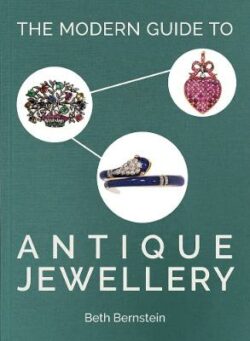New Art. Metamorphoses of Jewelry.
$99.99
Out of stock
Alert me when product is restocked
Description
From the end of the 19th century onwards, jewellery became an important vehicle for the formal experimentation and plastic innovation of its time, thanks to the development of knowledge about stone, the techniques used to produce it and the development of the art of jewellery. innovation of its time, thanks to the development of knowledge about stone, cutting and setting techniques. and setting techniques. Books and exhibitions showcase this leading decorative art, which accompanied Romanticism in all its forms. It accompanied Romanticism in its final stages before adopting the emerging Art Nouveau repertoire. Text in English and French. AUTHOR: Rossella Froissart is Director of Studies at the Ecole Pratique des Hautes Etudes (EPHE-PSL) and Professeur. Professor at the University of Paris. She is the author of numerous articles and books on the decorative arts of the late 19th and 20th centuries the late 19th and 20th centuries, including L’Art dans Tout: les arts decoratifs en France et l’utopie d’un Art nouveau, Paris, CNRS Editions, 2004. Paul Paradis is an art historian specialising in the decorative arts and a professor at the Ecole des Arts Joailliers. Florent Guerif is a doctoral student at the Ecole Pratique des Hautes Etudes (EPHE-PSL) and teaches at the Haute Ecole de Joaillerie and the Ecole des Arts Joailliers de Joaillerie and at the Ecole du Louvre. 250 colour illustrations
Additional information
| ISBN | 9782376660750 |
|---|---|
| Dimensions | 220 x 280 mm |
| Book Type | Hardback |
| Author | Rossella Froissart |
| Author Bio | Rossella Froissart is Director of Studies at the Ecole Pratique des Hautes Etudes (EPHE-PSL) and Professeur. Professor at the University of Paris. She is the author of numerous articles and books on the decorative arts of the late 19th and 20th centuries the late 19th and 20th centuries, including L'Art dans Tout: les arts decoratifs en France et l'utopie d'un Art nouveau, Paris, CNRS Editions, 2004. Paul Paradis is an art historian specialising in the decorative arts and a professor at the Ecole des Arts Joailliers. Florent Guerif is a doctoral student at the Ecole Pratique des Hautes Etudes (EPHE-PSL) and teaches at the Haute Ecole de Joaillerie and the Ecole des Arts Joailliers de Joaillerie and at the Ecole du Louvre. |
| Number of Pages | 208 |




